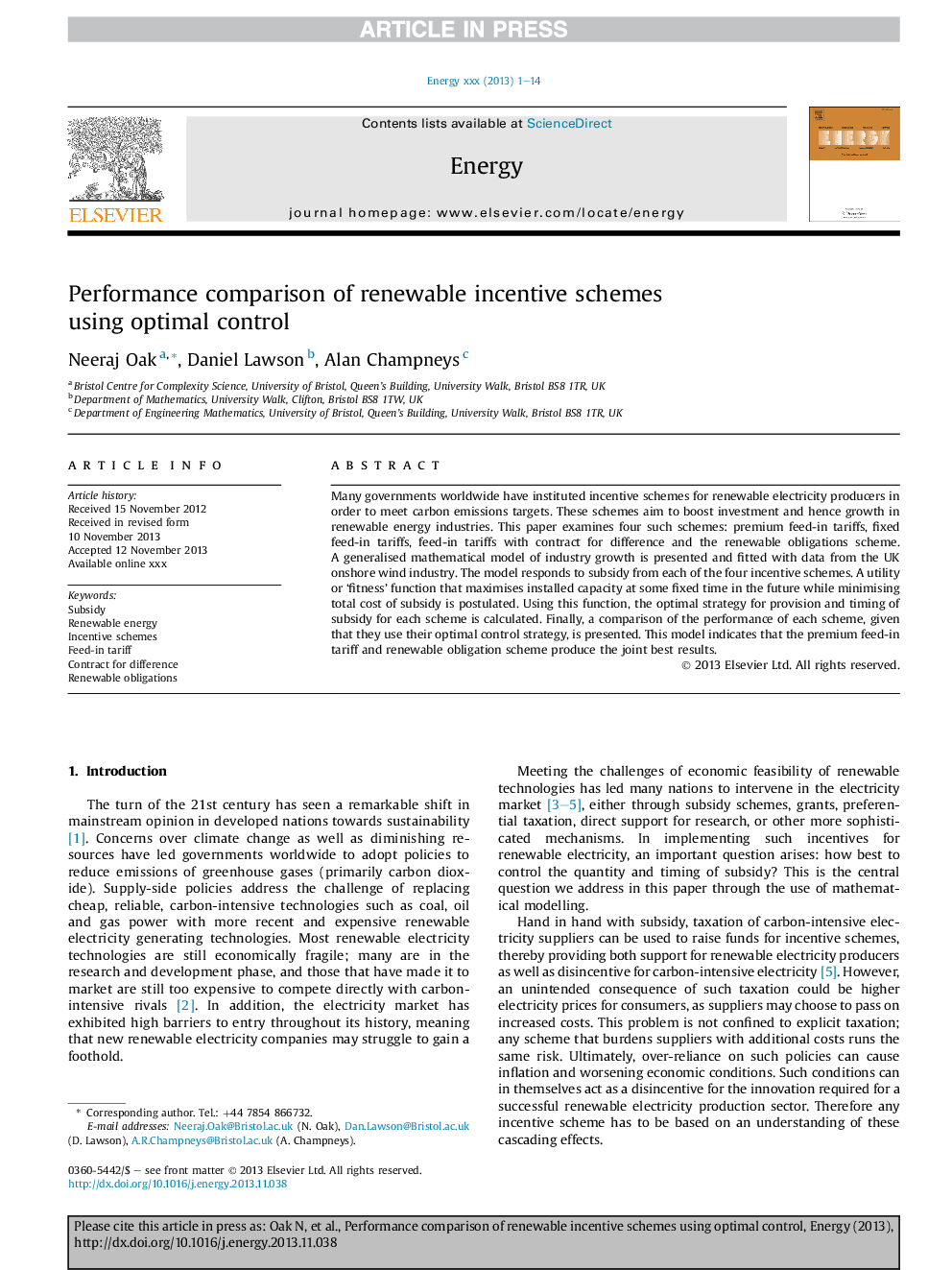| Article ID | Journal | Published Year | Pages | File Type |
|---|---|---|---|---|
| 8078630 | Energy | 2014 | 14 Pages |
Abstract
Many governments worldwide have instituted incentive schemes for renewable electricity producers in order to meet carbon emissions targets. These schemes aim to boost investment and hence growth in renewable energy industries. This paper examines four such schemes: premium feed-in tariffs, fixed feed-in tariffs, feed-in tariffs with contract for difference and the renewable obligations scheme. AÂ generalised mathematical model of industry growth is presented and fitted with data from the UK onshore wind industry. The model responds to subsidy from each of the four incentive schemes. A utility or 'fitness' function that maximises installed capacity at some fixed time in the future while minimising total cost of subsidy is postulated. Using this function, the optimal strategy for provision and timing of subsidy for each scheme is calculated. Finally, a comparison of the performance of each scheme, given that they use their optimal control strategy, is presented. This model indicates that the premium feed-in tariff and renewable obligation scheme produce the joint best results.
Related Topics
Physical Sciences and Engineering
Energy
Energy (General)
Authors
Neeraj Oak, Daniel Lawson, Alan Champneys,
